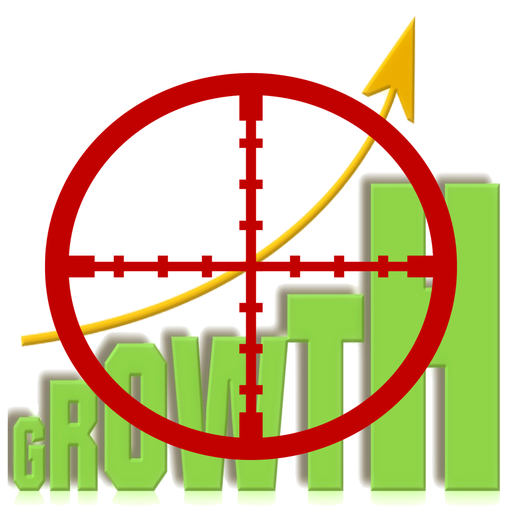Did you know that businesses leveraging data-driven marketing can achieve up to five times higher ROI compared to those relying solely on traditional instincts? It’s not magic—it’s embracing the undeniable power of facts, figures, and cutting-edge analytics to steal the competitive edge. In today’s digital marketing landscape, harnessing big data and predictive analytics transforms mere marketing work into revenue-generating engines. This guide will show you how to unlock insights that can revolutionize your sales, empower your marketing teams, and ensure every marketing campaign is a step ahead of the competition.
Revealing the Power of Data-Driven Marketing: Why Facts and Figures Outperform Intuition

Learn why companies harnessing data-driven marketing experience 5X higher ROI
Uncover how big data, predictive analytics, and sophisticated marketing strategies drive explosive sales
Discover actionable steps to transform your marketing performance with data insights
Data-driven marketing represents a seismic shift from the days when gut feeling and best-guess strategies guided marketing decisions. Today, the spotlight is firmly on data in marketing , with marketing teams using comprehensive analytics—ranging from customer demographics to real-time behavioral data—to shape every campaign. The result? Targeted messaging, efficient spend allocation, and marketing work that measurably boosts conversion and engagement.
The marketing channel you invest in, the content you create, and even the moment you send out an email are determined by actionable, real-time insights drawn from a multitude of data sources : web analytics, social media, CRM systems, and more. Companies that successfully embed big data and analytics into their core marketing strategies consistently outperform their competitors. They don’t just meet, but exceed, customer expectations—delighting audiences with relevant offers and experiences that feel personal and timely across channels.
Understanding Data-Driven Marketing: Essentials, Key Terms, and Core Concepts
What Is Data-Driven Marketing and Why Is It a Game Changer?

Data-driven marketing involves using customer data to inform every step of marketing—research, campaign planning, execution, and optimization. This approach is different from traditional marketing, which often relies on broad segments and generalized personas. Instead, data-driven marketing enables targeted strategies based on actual behavior, preferences, and historical data.
The impact? Marketing managers and marketing teams can create personalized and highly relevant experiences, ensuring marketing spend generates measurable impact on sales and customer satisfaction. Access to real-time data sources also gives marketers the agility to pivot when necessary, turning every marketing effort into an iterative, ongoing process—one where success is tracked, measured, and continually improved upon.
In the age of digital marketing, companies using data to inform strategies are not only more effective at reaching their target audience but also at optimizing their conversion rates and maximizing their return on investment. This ensures a seamless journey from marketing channel selection to post-campaign analysis.
How Data-Driven Marketing Differs from Traditional Marketing Approaches
Traditional marketing efforts depended on assumptions, often resulting in high marketing spend with uncertain returns. By contrast, data-driven marketing is all about efficiency and precision. Strategies are tested in real time, key metrics are tracked, and campaigns are adjusted on the fly using current performance data. This makes for a process that’s measurable, accountable, and laser-focused on tangible business outcomes.
Whereas traditional approaches grouped customers into broad segments, data-driven marketing slices through the noise to precisely target micro-segments and even individuals. Marketing teams can deliver unique content, offers, and messaging that speak directly to a customer’s needs—transforming the overall customer experience and driving increased loyalty.
Modern digital marketing also benefits from continued advances in big data and predictive analytics . Old-fashioned campaigns were “spray and pray”; now, every marketing decision is backed by hard evidence, leading to far greater efficiency and return on investment.
The Crucial Role of Big Data in Data-Driven Marketing Success
Big data is at the heart of today’s most successful marketing campaigns. By aggregating information from multiple data sources such as web analytics, social media platforms, purchase history, and customer feedback, marketers gain a comprehensive understanding of audience habits and motivations.
Big data enables marketing teams to identify patterns and predict trends that would be impossible to spot through intuition alone. The application of advanced analytics—such as clustering algorithms or machine learning—transforms raw data into actionable insights that power smarter marketing campaign planning, content creation, and even product development.
Thanks to big data, brands can now anticipate customer behaviors, optimize marketing spend, and enhance every interaction across digital touchpoints. As W. Edwards Deming famously said:
"Without data, you're just another person with an opinion." – W. Edwards Deming
Building a Data-Driven Marketing Strategy: The Blueprint for Modern Marketers
Step 1: Laying the Foundation with Data Collection and Integration

Any effective data-driven marketing strategy starts with meticulous data collection and integration. The goal is to break down data silos , ensuring seamless data flow between your CRM, website analytics, social media, and other platforms. Marketing teams must capture both structured data (such as purchase history) and unstructured data (like social media sentiment or product reviews).
Integration means all these data sources are unified, producing a single view of each customer. For chief marketing officers and managers, this provides the “source of truth” needed to drive everything from digital marketing campaigns to advanced marketing analytics. Clean, high-quality data lays the groundwork for trustworthy insights and effective predictive analytics.
Step 2: Analyzing Data for Actionable Marketing Insights
Once accurate data is collected and integrated, it’s time for analysis. By using advanced analytics tools, marketers can detect trends, segment audiences, and identify gaps in the customer journey. Powerful dashboards highlight what’s working, what isn’t, and where budgets can be optimized.
This analytical lens empowers marketing leaders to switch from gut-feeling campaigns to hypothesis-driven marketing strategies. The ability to test ideas, measure impact, and optimize every marketing effort based on live data is what truly sets data-driven marketing apart from traditional marketing.
Marketing managers should create regular reporting cycles, tracking key performance indicators (KPIs) and adjusting strategies based on what the data reveals. This ensures that data isn’t just collected—it actively drives continual improvement in marketing outcomes.
Step 3: Applying Predictive Analytics to Drive Marketing Decisions
Predictive analytics is the linchpin of advanced data-driven marketing. By analyzing past behaviors and trends, predictive models can forecast future performance—like which prospects are most likely to convert or which products will spike in demand.
Marketing teams use predictive analytics to refine customer segmentation, personalize offers, and even automate campaign triggers. Imagine sending exactly the right message, at the optimum time, via the most effective marketing channel—all powered by data insights.
Implementing predictive analytics doesn’t require advanced coding skills; most marketing analytics platforms include user-friendly predictive features. The payoff is smarter marketing spend, increased efficiency, and measurable improvements in conversion rates.
Strategy |
Key Data Used |
Outcome |
|---|---|---|
Customer Segmentation |
Demographics, Behaviors |
Personalized Experiences |
Predictive Analytics |
Purchase History |
Revenue Forecasting |
Attribution Modeling |
Funnel Data |
Channel Optimization |
Harnessing Big Data and Predictive Analytics in Data-Driven Marketing
Leveraging Big Data to Uncover Marketing Opportunities

Big data is more than just a buzzword—it’s a tool for discovering untapped marketing opportunities. By collecting and analyzing massive volumes of information, companies can spot previously invisible customer preferences, seasonal trends, or geographical shifts in demand.
With access to real-time data from digital marketing channels, companies adjust their strategies on the fly. They might, for example, identify that certain customer segments respond best to social media offers, while others prefer email campaigns. Each data point helps optimize every marketing channel and maximize ROI.
When marketing managers break data silos, opportunities multiply. Unified data makes it easier for marketing teams to execute omnichannel strategies and spot synergistic opportunities—like combining paid search with personalized content marketing for extended reach and efficiency.
Predictive Analytics: Anticipating Customer Behaviors and Needs
With predictive analytics embedded into the marketing strategy , brands can do more than respond—they can proactively anticipate what their customers will do next. Predictive models analyze historic customer data , identifying patterns that indicate likelihoods to purchase, churn, or engage.
Armed with this intelligence, marketing teams can craft deeply personalized campaigns, optimize conversion paths, and even predict which new products or services will succeed with different segments of their target audience. This not only streamlines marketing spend but also ensures every marketing campaign is backed by a clear data-informed rationale.
Predictive analytics also helps reduce wasted effort, focusing resources only on the prospects or customers with the highest likelihood to generate revenue—a true game changer for busy marketing managers.
Case Study: How Top Brands Use Data-Driven Marketing for Growth
Consider the approach of leading global brands that have fully embraced data-driven marketing . Retail giants use big data to segment audiences, ensuring each marketing campaign targets the right individual with personalized offers. Hospitality companies, meanwhile, use predictive analytics to adjust their digital marketing in real time, increasing bookings and retention.
One prominent brand increased sales by 30% after leveraging big data to overhaul its customer database and campaign targeting. With streamlined data integration across CRM, web platforms, and social media, their marketing teams delivered relevant, timely content that boosted conversion rates and significantly improved customer relations.
These success stories highlight the transformational power of integrating data to inform everything from marketing strategy to creative execution—proving that data-driven marketing works for any industry willing to embrace modern technology and disciplined analysis.
The Role of the Marketing Manager in a Data-Driven Marketing Environment
Key Skills for Marketing Managers in Data-Driven Campaigns

A marketing manager’s role in the age of data-driven marketing goes beyond creative direction—they must master analytics, data science, and communication. A successful marketing manager understands how to interpret big data reports, align marketing teams around data-informed objectives, and communicate insights effectively across all levels of the organization.
Strong leadership is essential. Marketing leaders must inspire curiosity in their teams, encouraging them to embrace test-and-learn mindsets focused on optimization. They are also responsible for ensuring that everyone—from creative teams to technical leads—understands how data should shape every marketing decision.
In competitive digital marketing environments, the ability to connect analytics to business outcomes is non-negotiable. Marketing managers bridge the gap between analysis and execution—helping to craft high-impact marketing campaigns that resonate and convert.
Aligning Teams around Data-Driven Marketing Objectives
Alignment is critical in making data-driven marketing work. Siloed marketing teams risk missing holistic opportunities and duplicating efforts. Modern marketing managers establish clear data-driven objectives—such as conversion targets, engagement rates, and cost-per-acquisition benchmarks—and rally teams to collaborate across channels.
This unified approach ensures data flow is consistent and accessible, enabling agile changes and cross-functional collaboration. By keeping everyone accountable to the same KPIs and return on investment goals, marketing managers create a culture of shared success and continuous improvement.
"Marketing managers must not only understand data but use it to inspire creative strategies."
Crafting Effective Data-Driven Digital Marketing Strategies
Personalization at Scale: Creating Customer-Centric Experiences

Personalization is the beating heart of data-driven digital marketing—allowing marketing teams to tailor content, offers, and product recommendations to individuals instead of anonymous segments. Leveraging big data and advanced analytics, marketers analyze behavioral data and preferences in near real-time.
Imagine delivering a personalized email with product suggestions, content, or offers that fit a customer’s recent activity—resulting in higher open rates, engagement, and conversions. Marketers use predictive analytics to automate personalization at scale while maintaining consistency and relevance across all customer touchpoints.
This customer-centric strategy solidifies trust and loyalty, ensuring that marketing campaigns don’t just broadcast messages but start conversations that drive deeper engagement and lasting brand advocacy.
Optimizing Marketing Channels with Real-Time Data
Optimizing each marketing channel with real-time data is now a necessity, not an option. By tracking performance analytics for email campaigns, paid search, social ads, and content marketing, companies gain instant feedback on what’s working and what’s not.
Email campaigns
Paid search and social ads
Content marketing based on analytics
Marketing teams now fine-tune campaigns in the moment to maximize effectiveness. If a particular social media ad is underperforming, budgets can be redirected, or content can be tweaked to attract the target audience. This nimbleness is where data-driven marketing truly outpaces older, static marketing strategies.
Integrating data from all channels into a single analytics dashboard gives marketing managers the bird’s-eye view needed to coordinate efforts and maximize results—making every marketing effort more precise, consistent, and ROI-focused.
Integrating Data in Marketing Channel Selection
Selecting the right marketing channels is no longer a guessing game. With robust data integration, marketers evaluate channel performance based on historical data, conversion rates, and campaign-specific metrics. This data-driven channel selection ensures that marketing spend is allocated to platforms with the highest impact.
For example, e-commerce marketers might discover that Instagram drives more conversions at lower cost per acquisition than traditional display ads, guiding future investment. Because real-time data is always available, marketing managers can adapt strategies instantly, rather than waiting for quarterly or annual reviews.
Well-integrated data also enhances attribution modeling, so marketers know precisely which channels—email, social, search, or content—deliver results and why. This insight eliminates waste and provides the transparency modern chief marketing officers demand.
Measuring the ROI of Data-Driven Marketing Initiatives

Setting KPIs for Data-Driven Campaigns
To prove and improve the value of data-driven marketing, setting KPIs is essential. Key metrics such as Customer Acquisition Cost (CAC), conversion rate, and email open rate must be established before a campaign begins. These metrics tie every marketing action to specific business goals.
Effective marketing analytics platforms allow marketing teams to automate reporting, ensuring nothing is missed. KPIs should be reviewed regularly to capture trends, seasonality, and the impact of changes in marketing strategy. Transparent KPIs foster a results-driven culture and clarify the link between marketing spend and tangible business outcomes.
KPI |
Data Source |
Reporting Frequency |
|---|---|---|
Customer Acquisition Cost |
CRM Analytics |
Monthly |
Conversion Rate |
Web Analytics |
Weekly |
Email Open Rate |
Email Platform |
Weekly |
Analyzing Results and Iterating Strategies
Measurement is more than a checkbox—it’s an ongoing process. After every campaign, marketing teams dig into the data to learn what resonated with the target audience, which channels performed best, and where money was wasted. This honest analysis is used to refine future strategies.
Sophisticated reporting and visualization tools enable chief marketing officers and managers to share insights with stakeholders quickly, turning data into action. Iteration—testing new ideas, measuring results, and evolving tactics—ensures that every marketing effort is increasingly effective and efficient over time.
Ultimately, this approach transforms the marketing department from a cost center into a proven growth engine fueled by data-driven decision making.
Overcoming Common Challenges in Data-Driven Marketing
Addressing Data Privacy and Security Concerns

With greater data comes greater responsibility. Data privacy and security are top concerns for marketing teams, especially as regulations (like GDPR and CCPA) become stricter. All customer data must be collected, stored, and used in compliance with legal standards—and IT teams must work closely with marketers to guard against breaches or misuse.
This means investing in secure platforms, regular audits, employee training, and clear privacy policies. Building and maintaining customer trust is just as important as any marketing campaign—and in a data-driven world, it’s the baseline for long-term success.
Transparent data practices not only protect brands from reputational damage but also offer competitive advantages—customers are far more loyal to companies that respect their privacy and take data stewardship seriously.
Solving Data Integration and Quality Issues
Data silos and inconsistent quality can hobble any data-driven marketing initiative. Legacy systems, duplicate records, missing or inaccurate data—these threaten both trust in analytics and the ability to execute seamless multi-channel campaigns.
To solve these challenges, companies must invest in modern data integration tools and processes that unify all data under a “single source of truth.” Routine data hygiene (cleansing, deduplication, validation) ensures reliable, actionable insights.
Collaboration between IT, analytics, and marketing teams guarantees that all stakeholders are aligned and data-driven marketing strategies aren’t hindered by technical or organizational barriers.
Training Your Team to Embrace Data-Driven Practices
Even the best technology won’t deliver results if the people using it aren’t data-fluent. Ongoing training is needed to upskill marketers in interpretation of analytics, basic data science, and the use of modern marketing platforms.
Workshops, certifications, and collaborative projects foster a test-and-learn culture where every team member is comfortable with experimentation and iteration—hallmarks of high-performing data-driven marketing teams.
Leadership must also model this commitment, prioritizing data-driven decision-making and rewarding teams for insights-based innovation.
Future Trends in Data-Driven Marketing: What's Next?
The Evolving Role of Artificial Intelligence and Automation

Artificial intelligence (AI) is rapidly transforming data-driven marketing by automating analysis, predicting outcomes, and optimizing campaigns in real time. AI-powered algorithms process vast datasets faster than any team, uncovering hidden insights that drive more sophisticated personalization and engagement strategies.
Automation streamlines repetitive tasks—such as bidding on ads, segmenting lists, or personalizing content—freeing up marketing managers to focus on creative strategy, experimentation, and growth. As AI matures, expect even greater accuracy, efficiency, and agility in digital marketing efforts.
AI turns data into actionable recommendations, making it easier for brands to adapt to changing customer preferences and marketplace conditions.
Emerging Data-Driven Marketing Technologies
New technologies continue to redefine what’s possible in marketing. The rise of customer data platforms (CDPs), omnichannel attribution tools, and automated analytics dashboards are revolutionizing how marketing teams collect, unify, and act on customer insights.
Other innovations include AI-powered chatbots, dynamic content generation, and real-time audience targeting based on live behavioral cues. Keeping pace with these emerging solutions ensures that marketing teams remain on the front lines of transformation, maintaining a competitive edge.
"Data-driven marketing will become even more personalized as AI matures."
People Also Ask: What is a data-driven marketing strategy?
A data-driven marketing strategy utilizes data analytics to inform every aspect of marketing, from campaign ideation to targeting, measurement, and optimization. By using facts instead of assumptions, marketing managers can ensure higher engagement and improved ROI.
People Also Ask: What is data-driven content marketing?
Data-driven content marketing involves creating and distributing valuable content based on the insights gathered from data analysis, such as audience preferences, content performance, and trending topics, to maximize relevance and engagement.
People Also Ask: What is the first step in data-driven marketing?
The first step in data-driven marketing is to gather accurate and comprehensive data from sources like CRM systems, web analytics, and customer databases, providing a strong foundation for analysis and decision-making.
People Also Ask: What are the trends in data-driven marketing?
Current trends in data-driven marketing include leveraging artificial intelligence for personalization, focusing on omnichannel attribution, prioritizing customer privacy, and using predictive analytics to shape strategies.
Essential FAQs on Data-Driven Marketing
How does data-driven marketing improve customer experience?
What tools are used to implement data-driven marketing?
Can data-driven marketing work for small businesses?
What are the biggest risks in adopting data-driven approaches?
Key Takeaways for Implementing Data-Driven Marketing Successfully
Always prioritize data accuracy and quality.
Invest in analytics tools and skilled professionals.
Continuously measure results and refine marketing strategies using data insights.
Stay updated on industry trends to remain competitive in data-driven marketing.
Ready to Transform Your Sales with Data-Driven Marketing?
Take the next step by investing in data analytics tools, fostering a data-first mindset across your marketing teams, and continuously refining your strategy using actionable insights. Your transformation starts today.
Sources
Example Site – https://www.salesforce.com/blog/data-driven-marketing/
Example Site – https://www.marketingevolution.com/marketing-essentials/data-driven-marketing
To deepen your understanding of data-driven marketing, consider exploring the following resources:
“Data Driven Marketing | Salesforce US” : This resource provides a comprehensive overview of data-driven marketing, detailing its benefits, challenges, and strategies for effective implementation. ( salesforce.com )
“What Is Data-Driven Marketing? | Coursera” : This article delves into the fundamentals of data-driven marketing, exploring various data types and strategies to enhance marketing effectiveness. ( coursera.org )
These resources offer valuable insights and practical guidance to help you effectively implement data-driven marketing strategies.
 Add Row
Add Row  Add
Add 




Write A Comment